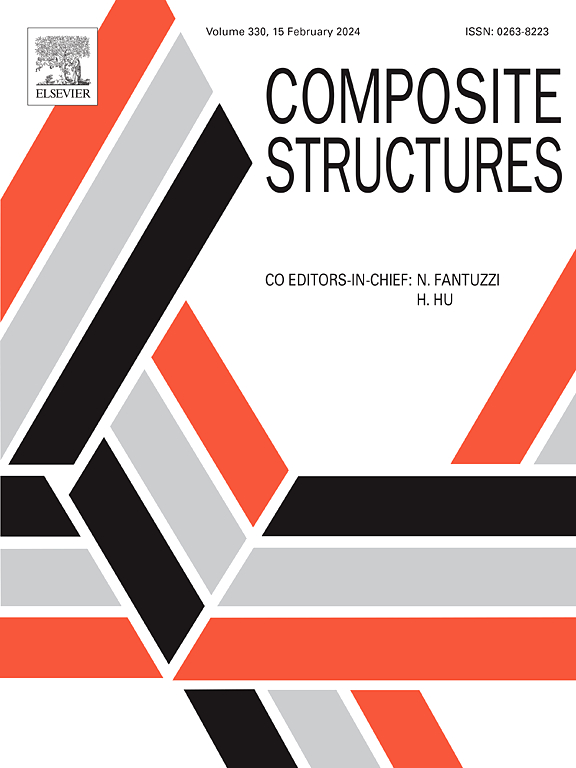具有机器学习优化结构的生物启发非连续复合材料
IF 6.3
2区 材料科学
Q1 MATERIALS SCIENCE, COMPOSITES
引用次数: 0
摘要
研究了受生物启发的分层非连续纤维复合材料,旨在实现增强的伪电导率和更高的韧性。结合先进的材料力学行为数值模拟和最先进的机器学习方法(如主动学习),提出了一种新颖的方法,可快速有效地在非连续性几何参数的广阔设计空间中进行搜索。我们开发了一种基于连续介质尺度的数值模型,用于模拟三点弯曲加载下不连续复合材料的机械行为,并将其应用于一种顺序贝叶斯优化方案中,该方案通过迭代搜索最大化韧性的材料结构。与不连续面的尺寸和精确拓扑结构相关的五个独立几何变量构成了一个巨大的五维设计空间,其中有超过 260 万种可能的组合。在这个空间中,所提出的方法经过 100 次迭代后,有效地确定了一个显著的最佳配置,可将材料的韧性提高 100%以上,而对极限抗弯强度的影响仅为 10%。本文章由计算机程序翻译,如有差异,请以英文原文为准。
Bio-inspired discontinuous composite materials with a machine learning optimized architecture
Bio-inspired hierarchical discontinuous fibrous composite materials are investigated with the aim of achieving enhanced pseudo-ductility and elevated toughness. A novel methodology is proposed to search quickly and efficiently through the vast design space of the geometrical parameters of the discontinuities, combining advanced numerical simulations of the material’s mechanical behavior with state-of-the-art Machine Learning approaches, such as Active Learning. A continuum mesoscale-based numerical model is developed to simulate the mechanical behavior of discontinuous composites under three-point bending loading and is utilized in a sequential Bayesian optimization scheme that iteratively searches for the material architecture that maximizes toughness. Five independent geometrical variables related to the size and exact topology of the discontinuities form a vast five-dimensional design space of more than 2.6 million possible combinations. In this space, the proposed methodology efficiently identifies, after 100 iterations, a remarkable optimal configuration that increases the material’s toughness by more than 100%, with a knock-down effect on the ultimate bending strength of only 10%.
求助全文
通过发布文献求助,成功后即可免费获取论文全文。
去求助
来源期刊

Composite Structures
工程技术-材料科学:复合
CiteScore
12.00
自引率
12.70%
发文量
1246
审稿时长
78 days
期刊介绍:
The past few decades have seen outstanding advances in the use of composite materials in structural applications. There can be little doubt that, within engineering circles, composites have revolutionised traditional design concepts and made possible an unparalleled range of new and exciting possibilities as viable materials for construction. Composite Structures, an International Journal, disseminates knowledge between users, manufacturers, designers and researchers involved in structures or structural components manufactured using composite materials.
The journal publishes papers which contribute to knowledge in the use of composite materials in engineering structures. Papers deal with design, research and development studies, experimental investigations, theoretical analysis and fabrication techniques relevant to the application of composites in load-bearing components for assemblies, ranging from individual components such as plates and shells to complete composite structures.
 求助内容:
求助内容: 应助结果提醒方式:
应助结果提醒方式:


